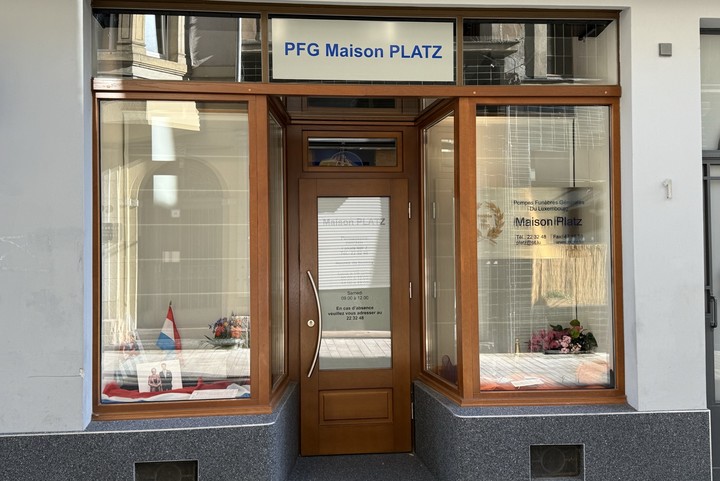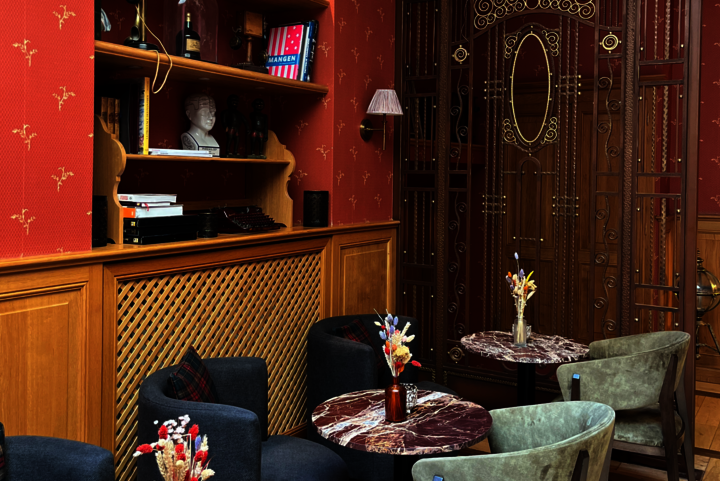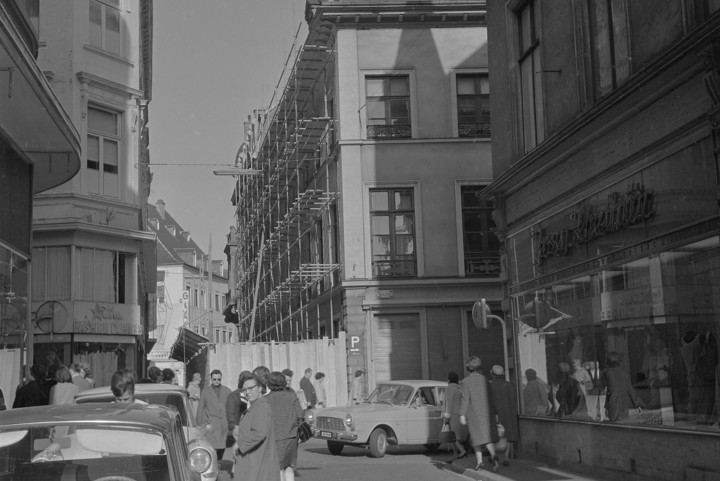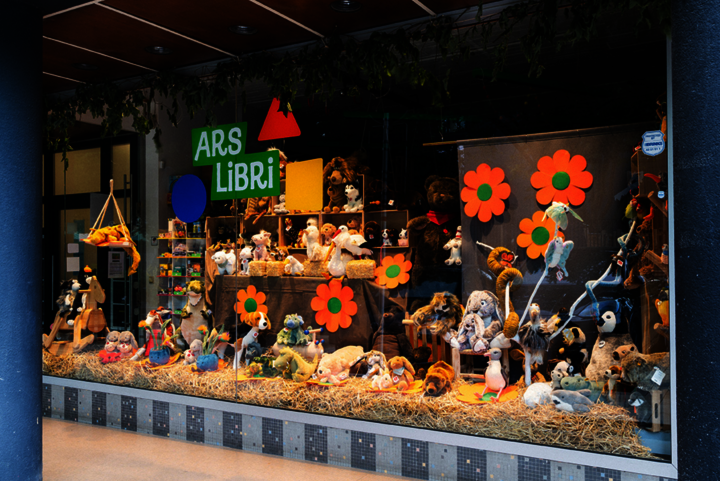(Re)discover our city - Hôtel Carlton
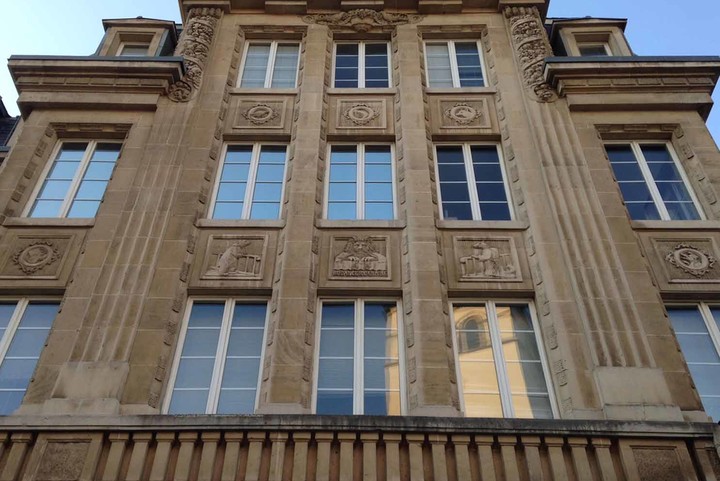
Hôtel Carlton (5, rue Dicks)
Think you know our capital well? Well, let's see about that! Some of the buildings that you walk past on a regular basis have a special story behind them. Dr Robert L. Philippart is a true expert on the subject and will guide you through the city to uncover these hidden stories, making you look at some of our symbolic buildings in a new way.
Hôtel Carlton (2, rue Dicks)
In 1927, just a few years after the construction of the ARBED headquarters, the Hôtel Carlton at 2, rue Dicks in Luxembourg was about to open its doors. The Perroquet dance and variety shows held there until 1947 were major events for the city's night owls. Taken over by the Chez Nous cabaret bar, the venue has made its mark on several generations. Between 1990 and 2017, the "Revue" magazine had its headquarters at what was by then the former Hôtel Carlton.
The establishment had been built on an old state-owned site that used to be part of the city's fortifications. The old Fort Elisabeth, built in 1731 on the site of the hotel, had been demolished in 1871/72. The block of buildings surrounded by Rue du Fort Bourbon, Rue du Fort Elisabeth, Boulevard de la Pétrusse and Avenue de la Gare had already been divided into plots in 1876 under the direction of engineer and landscape architect Edouard André, who was in charge of the city's urban planning. However, the entire Bourbon Plateau opposite up to Rue Ste Zithe remained unoccupied. It was not until 1906, three years after the opening of Avenue de la Liberté and the Adolphe Bridge, that the Bourbon Plateau was built up. The Sacré Cœur church, which is right opposite the former Hôtel Carlton was built as recently as 1930. The former Hôtel Carlton is now part of a UNESCO protected area.
Michel Betz, who bought the land, was a well-known retired businessman and owner of large plots in Hollerich, Gare and Bonnevoie. He had closely followed discussions on the development of this new quarter in the city. Betz was aware of the importance of the proximity of the church, the hotel, the ARBED building, the Clinique Sainte Thérèse hospital, the Viaduct and the Avenue de la Liberté. He appreciated the incredible panoramic view that his land offered him across the old town and up to the Fetschenhof. He had taken note of the demand for buildings to be constructed on Rue Dicks that were set back from those on the corner with Avenue de la Liberté. This arrangement was intended to protect the residential quarter from the noise of the new thoroughfare.
The architect's design for the new hotel was meticulously planned. Mathias Martin (1882–1943), a graduate of the École d'Artisans de l’État, had established himself as one of the most talented Art Nouveau architects in Luxembourg, with his designs including the Reinhard glove factory, Villa Clivio, Maison Pier, Villa Pauly, Maison Belair, Villa Robur, Cinéma Capitole and Café Mille Colonnes. In March 1922, Martin was awarded a patent for his "Neue Bauart-System Architekt Mathias Martin", an invention he put to the test when constructing the Hôtel Carlton. "Alle Decken sind aus armiertem Ziegelbeton, die Treppen aus Beton und Terrazzo" (All of the ceilings are made of reinforced brick concrete, the staircases of concrete and terrazzo), Luxemburger Wort 20/10/1931. The building was built on a 510 m2 plot and had two separate wings. One wing contained 12 rooms, the other 14. Each was connected by communicating doors. This enabled greater flexibility for the business. Both wings had central heating. The rooms had hot and cold running water and some had ensuites. The café-restaurant opened out onto a terrace with panoramic views.
The sculptures on the façade are in memory of the national poet Michel Rodange (1827–1876). On the Rue Dicks side, an inscription celebrating the poet's centenary reads "Centenaire de Rodange”. The façade depicts animals from Rodange's epic fable Renert. Interestingly, Hôtel Carlton was the first place to honour Rodange: the Fiischen (little fox) monument in Place Guillaume dates from 1932 and the commemorative plaque on the house where he died was not installed until 1939.
Named in reference to the famous hotels found in big cities or seaside resorts, the Hôtel Carlton was opened in 1928 by Jean-Pierre Goldschmit.
Being in such a beautiful location, away from the hustle and bustle of passers-by, brought with it some specific opportunities. In 1931, Goldschmit announced the opening of "Perroquet-Dancing Luxembourg", an establishment furnished in the Art Deco style. This new American-style venue had an orchestra called "Francky and his Rhythm Boys" and the "Markoff" dancers, who were stars of the Riga Opera. Just a month later, following the death of the building's owner, Betz & Co. put the Hôtel Carlton and the Café Perroquet up for sale, but did not manage to find a buyer. In November 1932, the building went up for auction again and was purchased by the architect Gustave Serta on behalf of the industrialist Corneille Karp-Kneip. Following this acquisition, Hôtel Carlton was no longer included in the hotel guide published by Union des villes et centres touristiques du Grand-Duché, the predecessor of the Luxembourg tourist board. The Café Perroquet remained open.
On 31 December 1940, shortly after Luxembourg was annexed by Nazi Germany and the civil administration body known as the Zivilverwaltung was set up (22 October 1940), the press announced the liquidation of 16 beds, 12 bedside tables, 16 chairs, a counter and a sideboard. The German police office was established on the premises in August 1941. It was also the site of the city's lost property office.
In 1946, when the war was over, dancing came back to Le Perroquet until the venue was fully refurbished. From 1947, the Chez Nous cabaret bar served up cocktails and aperitifs every evening as well as staging swing dance evenings and hosting performances by singers of international renown. In 1972, Chez Nous was restructured as a limited-liability company. In 1980, it began welcoming visitors to its strip shows. The establishment kept night owls entertained through to the early hours, until the offices of the "Revue” magazine took over the entire building.
Hotel Carlton © Robert Philippart
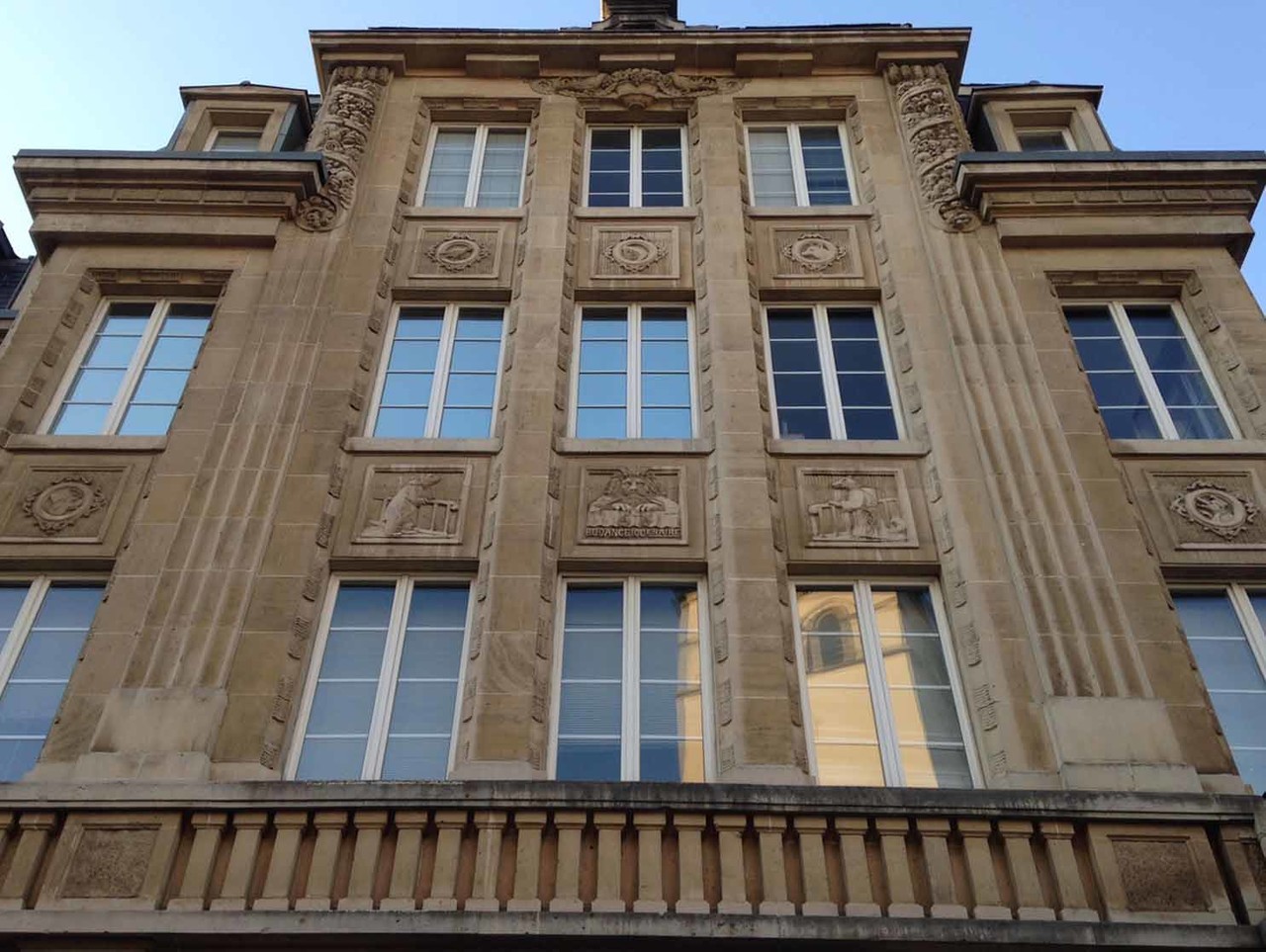
Inscrivez-vous
à la newsletter.
Inscrivez-vous et recevez tous les mois l’actualité shopping de la ville directement par email ! Bon plans, événements phares, nouveaux commerces, ne manquez rien de l’actualité commerçante.
Cityshopping news

